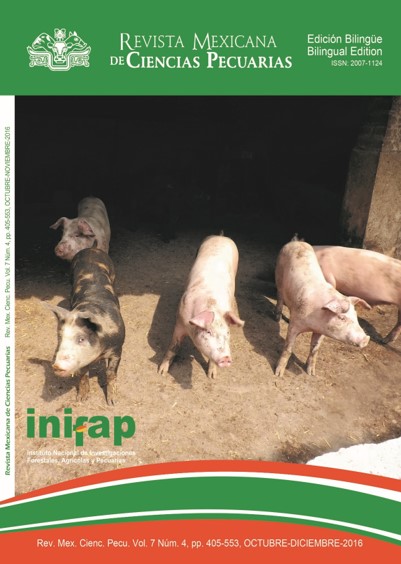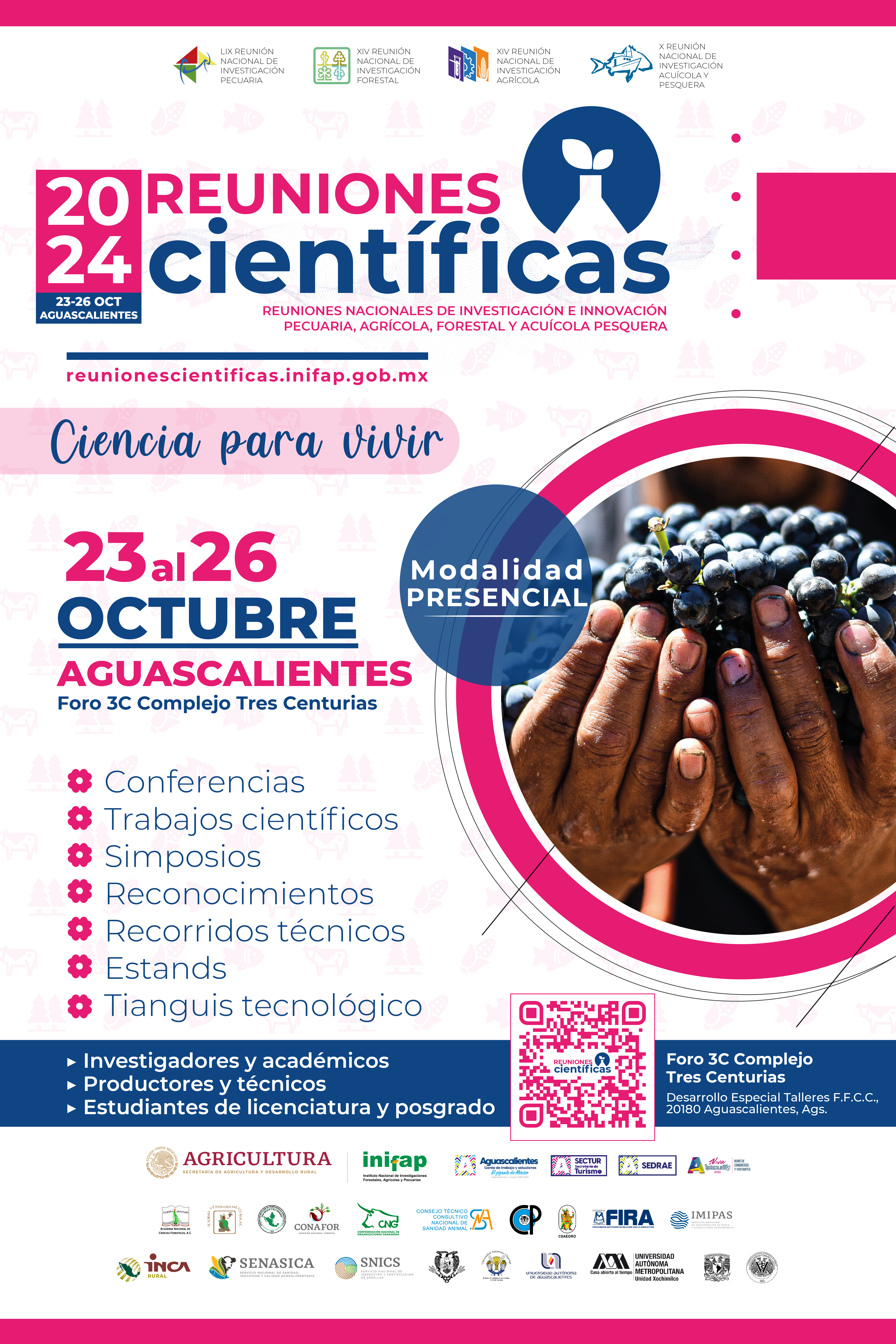Typology and characterization of beekeepers in the State of Morelos, Mexico
DOI:
https://doi.org/10.22319/rmcp.v7i4.4279Keywords:
Apiculture, Stratification, Technological component, Technological index.Abstract
The objective of this study was to characterize the types of beekeepers in the state of Morelos, México, based on the use of technology components (TC), and socioeconomic and productive factors in order to generate information to design recommendations to support beekeeping. A questionnaire was designed and applied to a sample of 116 beekeeping units, socioeconomic data and information about TC for colony management, genetics, nutrition and health were obtained, from these information 18 original variables, and 6 technological index were defined and used to stratify the beekeeping productive units (BPU) applying multivariate methods using principal component and cluster analyses. To characterize and compare the resulting beekeeper groups an analysis of variance under a completely random model for continuous variables and a homogeneity test for categorical variables were performed to detect differences between groups. Four factors were detected that explain 70 % of the variance, and because of the factorial load of the variables analyzed, the factors were named as: 1) Productive capacity of the BPU, 2) Health status of the BPU, 3) Beekeeper capacities and 4) Management of the BPU. Three types of beekeepers were identified; small beekeepers with low technological level (55 %), large beekeepers with intermediate technological level (9 %) and medium beekeepers with intermediate technological level (35 %). The typology obtained may be useful to generate differentiated public policies to increase the use of technological innovations to improve the efficiency and productivity of the beekeeping units.
Downloads
References
De Freitas BW, Pinheiro DeSE. Nível tecnológico e seus determinantes na apicultura Cearense. Rev Política Agr 2013;XXII(3):32-47.
SIAP. Sistema de Información Agropecuaria y Pesquera. Cierre de la producción pecuaria por Estado 2013. http:// www.siap.gob.mx/ganaderia-produccion-anual.
Consultado 3 Abr, 2015.
García GL, Meza RE. Oportunidades y obstáculos para el desarrollo de la apicultura en Nayarit. http://www.eumed.net. Consultado 25 Nov, 2012.
Duvernoy I. Use of a land cover model to identify farm types in the Misiones agrarian frontier (Argentina). Agric Syst 2000;64(3):137-149.
Köbrich C, Rehman T, Khan M. Typification of farming systems for constructing representative farm models: two illustrations of the application of multivariate analyses in Chile and Pakistan. Agric Syst 2003;(76):141-157.
Güemes RF, Echazarreta GC, Villanueva GR, Pat FJ, Gómez ÁR. La apicultura en la península de Yucatán. Actividad de subsistencia en un entorno globalizado.
Rev Mex Caribe 2003;VIII(16):117-132.
Magaña MM, Moguel OY, Sanginés GJ, Leyva MC. Estructura e importancia de la cadena productiva y comercial de la miel en México. Rev Mex Cienc Pecu 2012;3(1):49-64.
Contreras EF, Pérez AB, Echazarreta CM, Cavazos AJ, Macías MJ, Tapia GJ. Características y situación actual de la apicultura en las regiones Sur y Sureste de Jalisco, México. Rev Mex Cienc Pecu 2013;4(3):387-398.
Fachini C, Firetti R, Cardoso DeOE, Assiz DeCA. Perfil da apicultura em Capão Bonito, estado de São Paulo: aplicação da análise multivariada. Rev Economia Agr São
Paulo 2010;57(1):49-60.
SENASICA. Servicio Nacional de Sanidad, Inocuidad y Calidad Agroalimentaria. http://sistemas1.senasica.gob.mx/ rastreabilidadmielWeb. Consultado 22 feb, 2012.
Srairi MT, Lyoubi R. Typology of dairy farming systems in Rabat Suburban region, Morocco. Arch Zootec
;(52):47- 58.
Gelasakis AI, Valergakis GE, Arsenos G, Banos G. Description and typology of intensive Chios dairy sheep farms in Greece. J Dairy Sci 2012;95(6):3070-3079.
Castaldo A, Acero R, Perea J, Martos J, Valerio D, Pami J, et al. Tipología de los sistemas de producción de engorde bovino en la Pampa Argentina. Arch Zootec 2006;55(210):183-193.
García CH, Calle LM. Consideraciones metodológicas para la tipificación de sistemas de producción bovina a partir de fuentes secundarias. Rev Corpoica Cienc Tecnol Agropecu
;2(2):6-15.
Hair JF. Multivariate data analysis. Upper Saddle River, NJ, USA: Pearson Prentice Hall; 2006.
López D, González C, Chacín F. Caracterización de unidades de producción porcina en cama profunda a pequeña escala en Venezuela, utilizando métodos multivariados. Avances Invest Agropecu 2014;18(1):67-79.
Valerio D, García A, Acero R, Castaldo A, Perea J, Martos J. Metodología para la caracterización y tipificación de sistemas ganaderos. Colombia: Documento de trabajo, Producción Animal y Zootecnia; 2004.
Coronel DeRM, Ortuño PS. Tipificación de los sistemas productivos agropecuarios en el área de riego de Santiago del Estero, Argentina. Problemas del desarrollo. Rev Latinoam Econo 2005;36(140):63-88.
Bhusal SJ, Thapa RB. Comparative study on the adoption of improved beekeeping technology for poverty alleviation. J Inst Agr Anim Sci 2005;(26):117-125.
Kalenatic D, González L, López CA, Arias LH. El sistema de gestión tecnológica como parte del sistema logístico en la era del conocimiento.
Cuadernos Admin 2009;(22)39:257- 286.
Masuko MB. Socioeconomic analysis of beekeeping in Swaziland: A case study of the Manzini Region, Swaziland. J Develop Agr Econom 2013;5(6):236-241.
Martínez GE, Pérez LH. La producción de miel en el trópico húmedo de México: avances y retos en la gestión de la innovación. Texcoco, México: Universidad Autónoma Chapingo; 2013.
Vural H, Karaman S. Socioeconomic analysis of beekeeping and the effects of beehive types on honey production. Not Bot Hort Abrobot Cluj 2009;(1):223-227.
Mujuni A, Natukunda K, Kugonza DR. Factors affecting the adoption of beekeeping and associated technologies in Bushenyi District, Western Uganda. Development 2012;(24):8-14.
Adgaba N, Al-Ghamdi A, Shenkute AG, Ismaiel S, Al-Kahtani S, Tadess Y, et al. Socio-economic analysis of beekeeping and determinants of box hive technology adoption in the Kingdom of Saudi Arabia. JAPS, 2014;(24)6:1876-1884.
Fadare SO, Ojo SO, Imoudu PB. Analysis of production performance of beekeeping in the Niger Delta area of Nigeria. Apiacta 2008;(43):37-48
Downloads
Published
How to Cite
-
Abstract1623
-
PDF (Español)971
Issue
Section
License

This work is licensed under a Creative Commons Attribution-NonCommercial-ShareAlike 4.0 International License.






